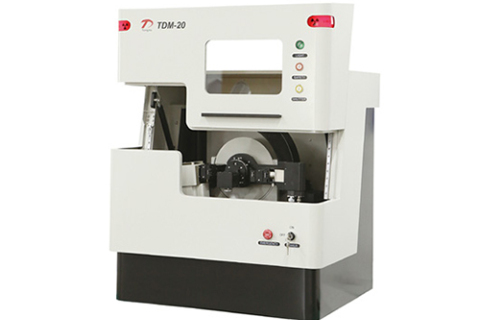
- Home
- >
News
The use of hybrid pixel detector can achieve the best data quality while ensuring low power consumption and low cooling. This detector combines the key technologies of single photon counting and hybrid pixels, and is applied in various fields such as synchrotron radiation and conventional laboratory light sources, effectively eliminating the interference of readout noise and dark current. Hybrid pixel technology can directly detect X-rays, making it easier to distinguish signals, and detector can efficiently provide high-quality data.
The high-precision multifunctional angle measuring instrument of Tongda Technology can not only measure conventional powder samples, but also test liquid samples, colloidal samples, viscous samples, loose powders, and large solid samples.
Dandong Tongda Technology Co., Ltd. holds a team building event every summer to focus on the survival and development of employees, implement humanistic care that cares for, cherishes, and respects people, and stimulate the cohesion, enthusiasm, and vitality of employees. Tongda Technology Company is a professional manufacturer of X-ray analysis instruments. The company currently has TD series X-ray diffractometers, X-ray single crystal diffractometers, X-ray desktop diffractometers, X-ray crystal analyzers and other products. X-ray diffractometer is mainly used for phase qualitative and quantitative analysis, crystal structure analysis, material structure analysis, crystal orientation analysis, macroscopic or microscopic stress determination, grain size determination, crystallinity determination, etc. of powder, block or film samples.
The crystal structure of the perovskite films modified by ionic liquid (ILs) BMIMAc under various annealing durations was characterized by X-ray diffraction.
Founded in 2002, Dandong Tongda Technology Co., Ltd. is a national high-tech enterprise with X-ray analysis instruments and X-ray non-destructive testing instruments as its leading products
Different crystal forms of the same drug may differ significantly in appearance, solubility, melting point, etc., affecting the stability, production, bioavailability, and safety of the drug.
Battery material analysis helps to understand and optimize battery performance, improve battery safety and life, reduce costs, and promote the development and application of new materials.
XAFS, as an advanced characterization technique for the local structure analysis of materials, can provide more accurate atomic structure coordination information in the short-range structure range than X-ray crystal diffraction.
A material whose properties are dominated by two-dimensional effects, the properties of the material on a two-dimensional scale are different from its properties on a larger scale.
Residual stress has a great impact on the dimensional stability, stress corrosion resistance, fatigue strength, phase change and other properties of materials and components. Its measurement has been widely concerned by academia and industry.












